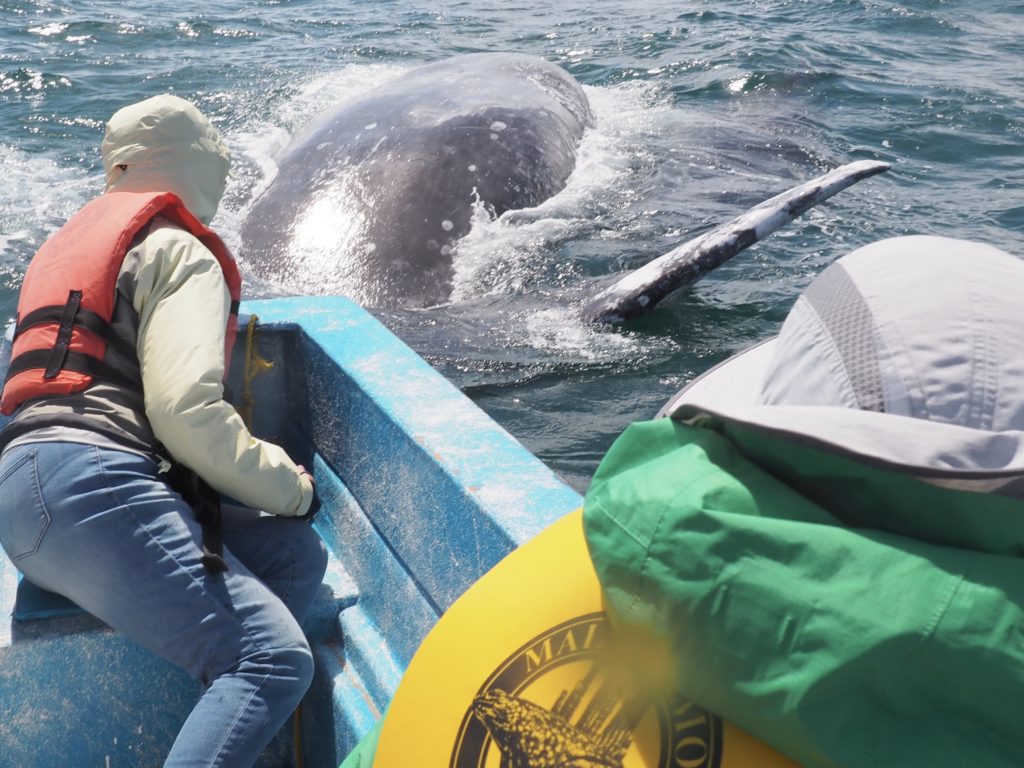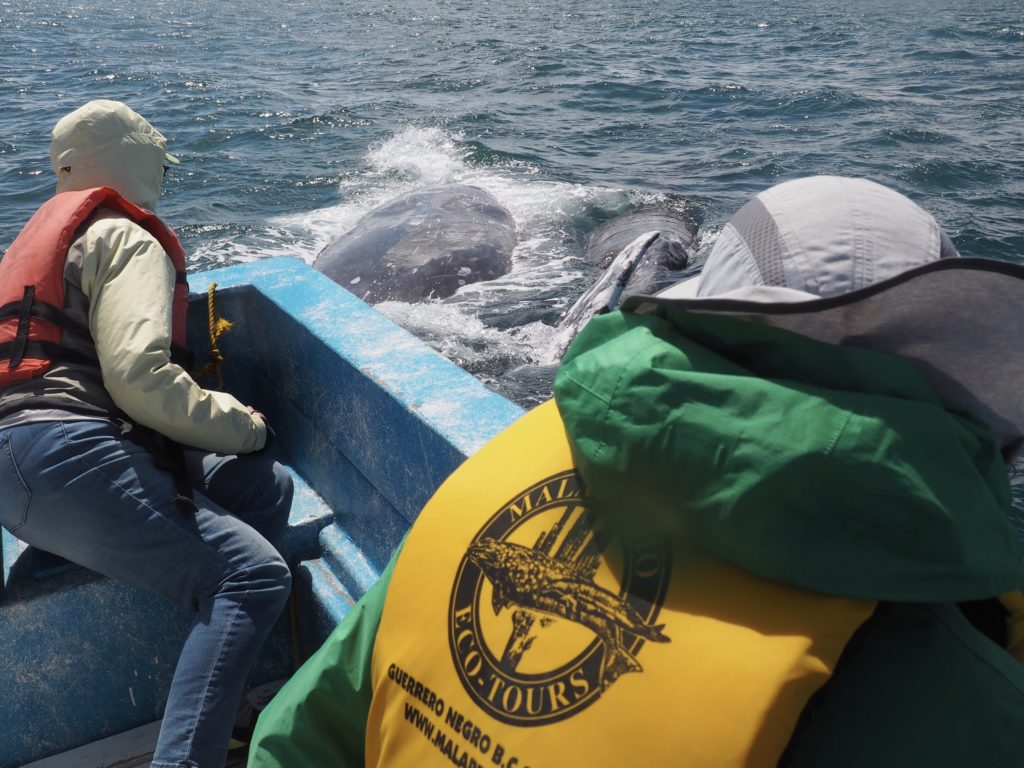
One of the most unusual ecotourist attractions of the Baja Peninsula is the opportunity to encounter Gray Whales, up close and in small boats.
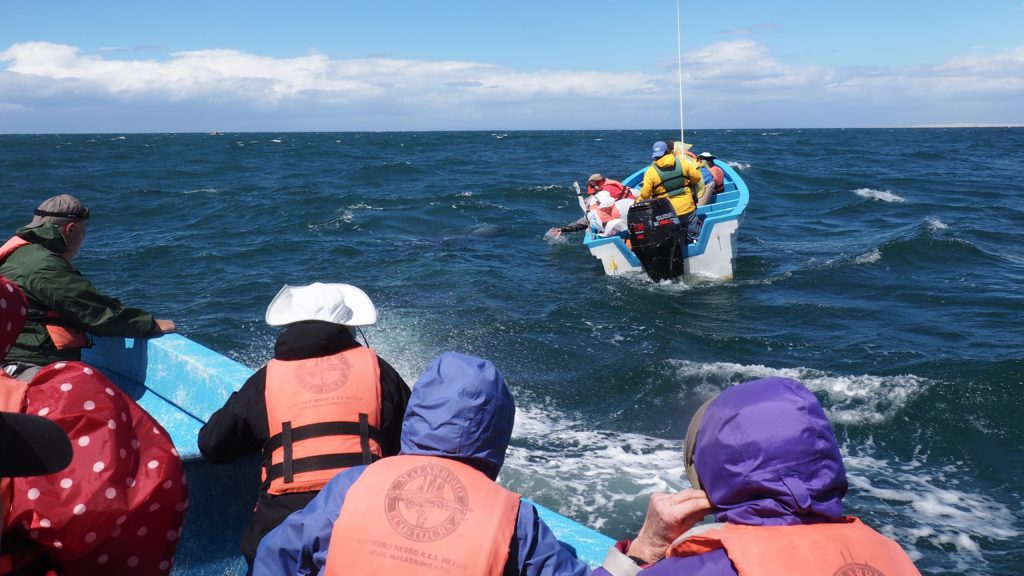
Gray Whales are bottom feeding baleen whales sometimes referred to as “mud suckers” because they take in a great mouthful of bottom mud and express the water with their enormous tongues through the baleen. An adult is roughly 45’ long and 35 tons, living up to at least 70 years. They feed in the Arctic, but breed in the lagoons of Baja California and spend most of their lives migrating back and forth. The population along the western coast of North America is stable and healthy at about 27,000 individuals, although they are extinct in the Atlantic.
The first day out was in the lagoon of Guerrero Negro on a very blustery day. It had been a somewhat rough van ride out on dirt roads and then one of those thud-thud-thud rides out to the area of the lagoon in which whale encounters are permitted under tightly controlled conditions. An association is run by the outfitters to facilitate this small tourist industry consistent with protecting the whales.
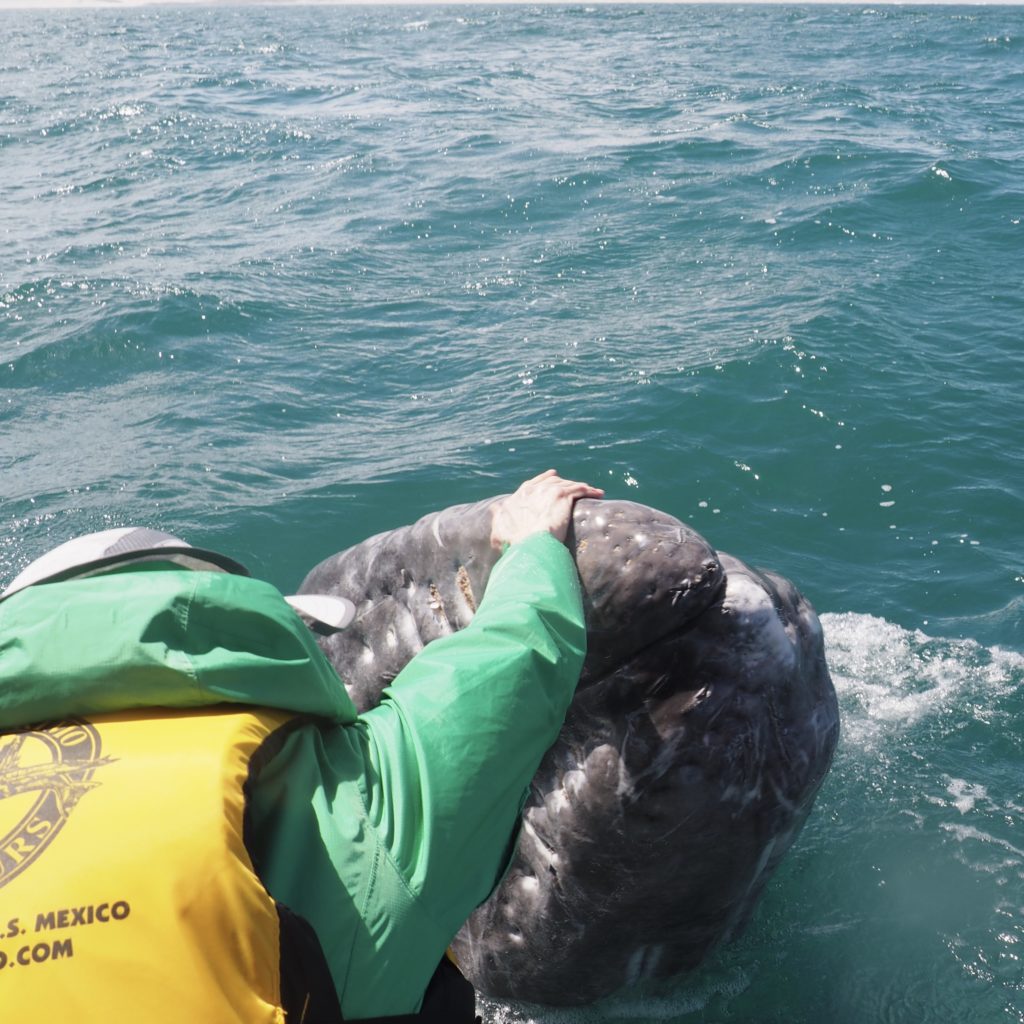
The big payoff for us was when Amanda got to “say hello” to one of the whales. We, of course, attributed it to our wonderful job of singing and whistling and splashing water to encourage the whales to come to the boat. This curious “friendly behavior” (by the whales) was accidentally discovered some years ago by a terrified fisherman. Before that, people referred to the whales as “devil fish” because of the many lives lost in whaling days when the whales resorted to self defense. Given the extreme ages to which some whales are known to live, we were hoping that we wouldn’t encounter a methuselah with a long memory.

The whales will scrape their backs against the sea floor apparently in an attempt to dislodge barnacles and sea lice. We’ve now learned that they appreciate a good scratching on their skin, something only humans can help with.
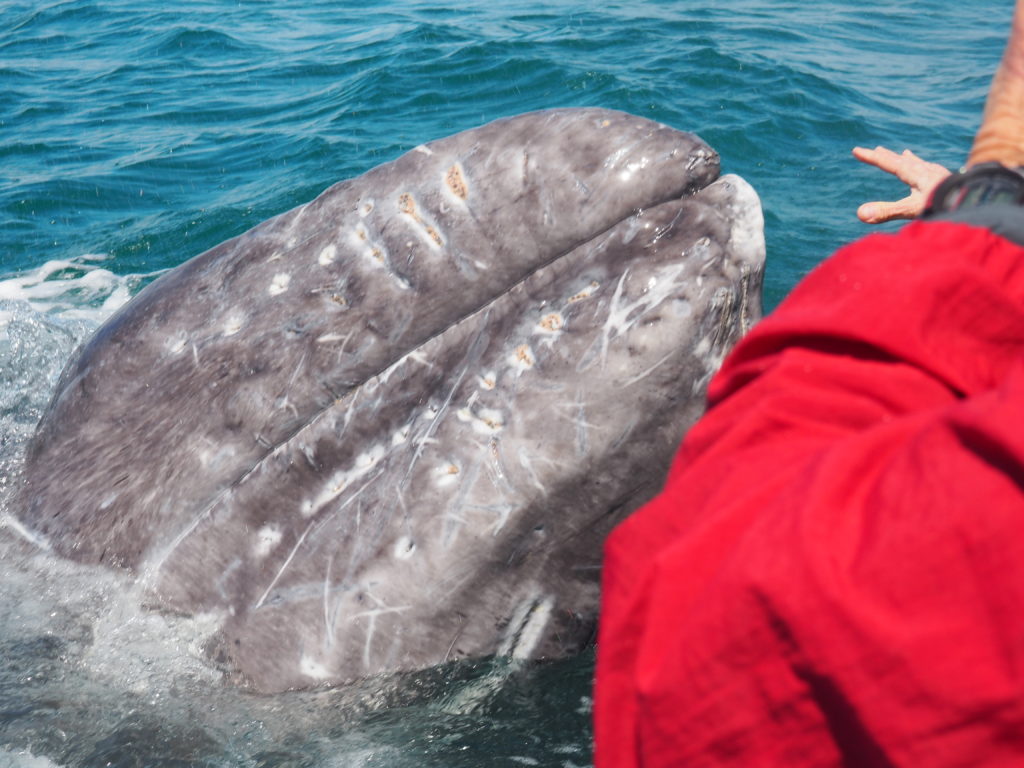


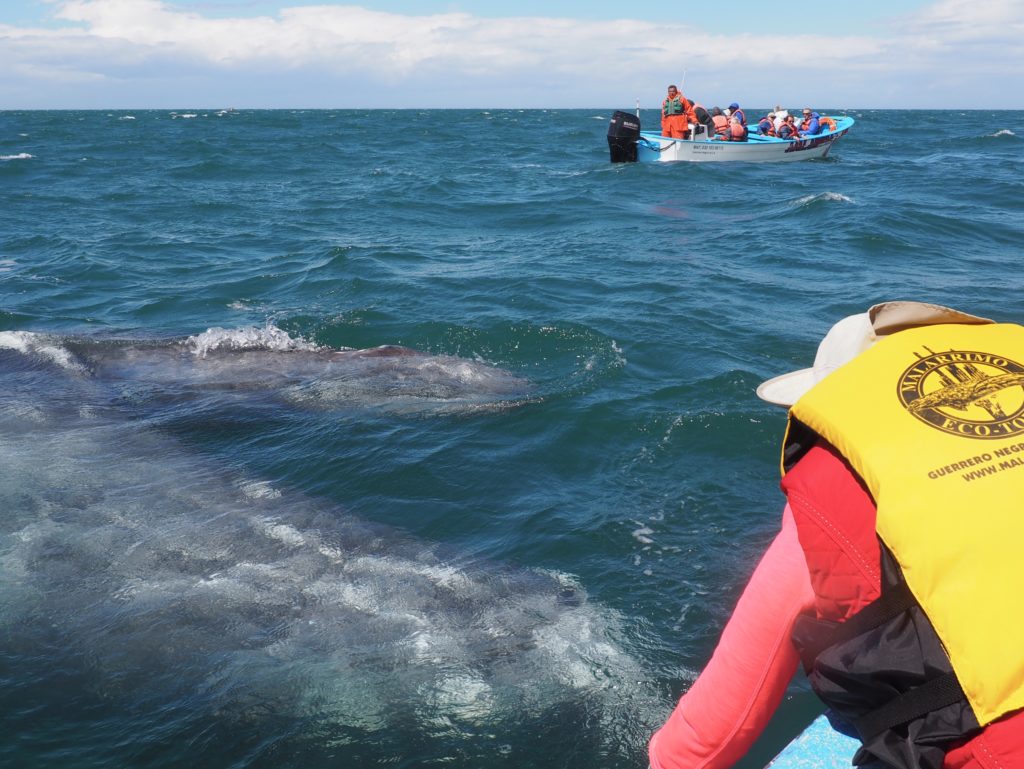
A mother and calf approach the boat.
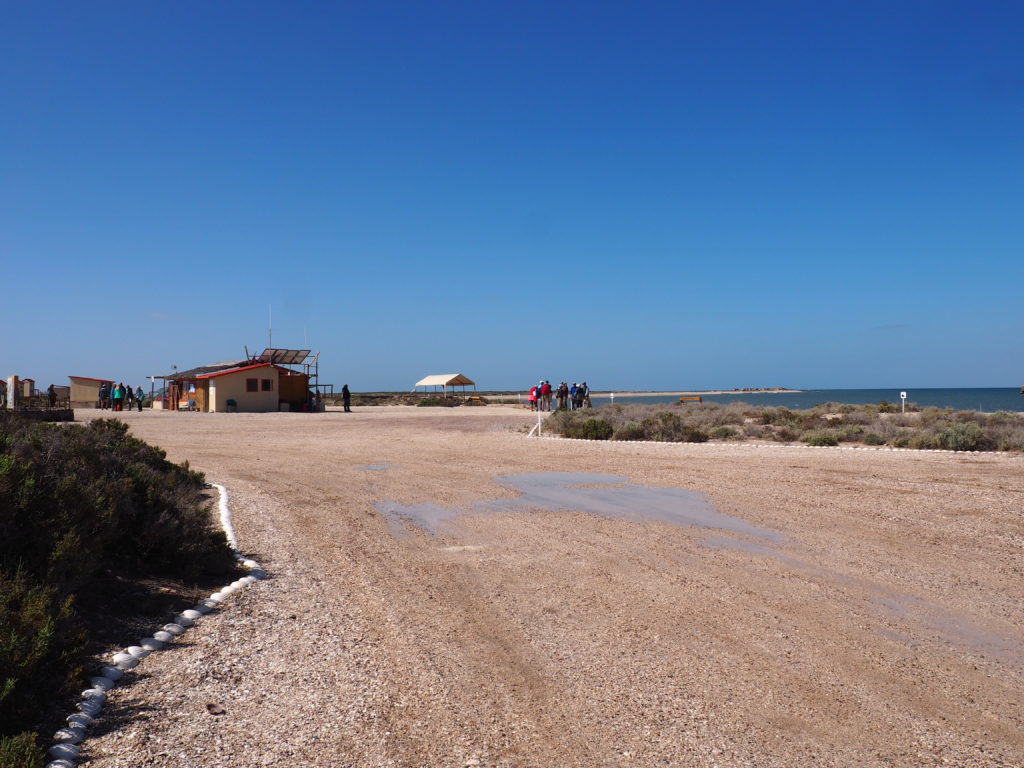
The next day was a gorgeous one with very little wind, making for a smoother time on the water. San Ignacio Lagoon is considerably smaller than Guerrero Negro and is where the history of whale encounters began.
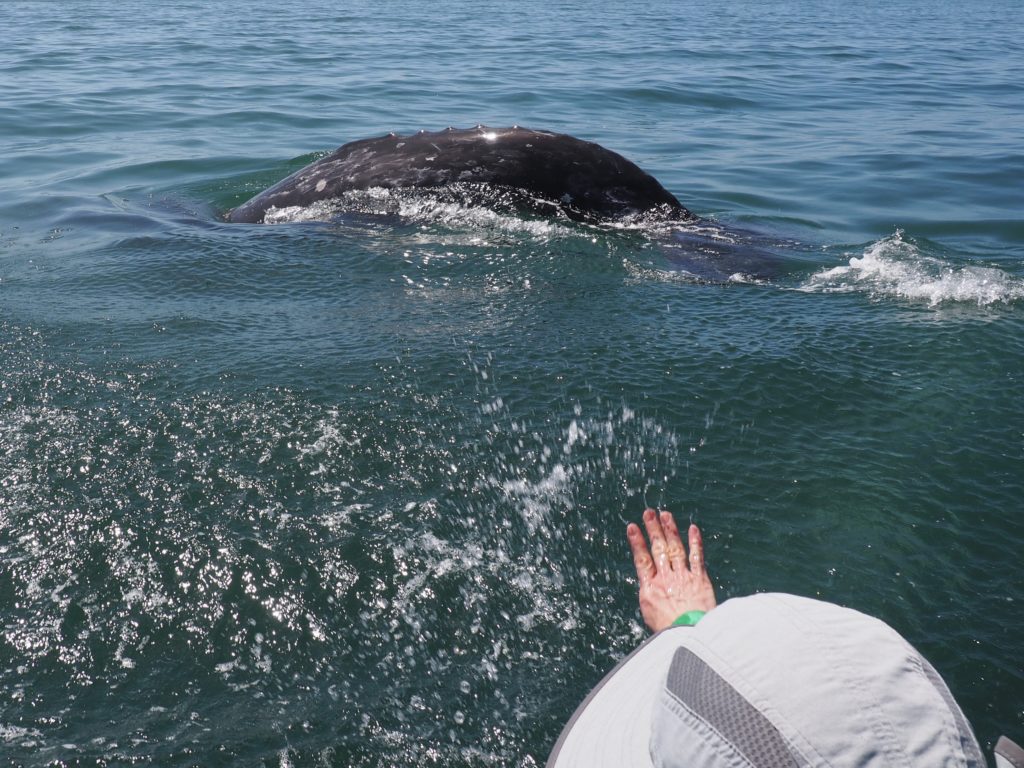
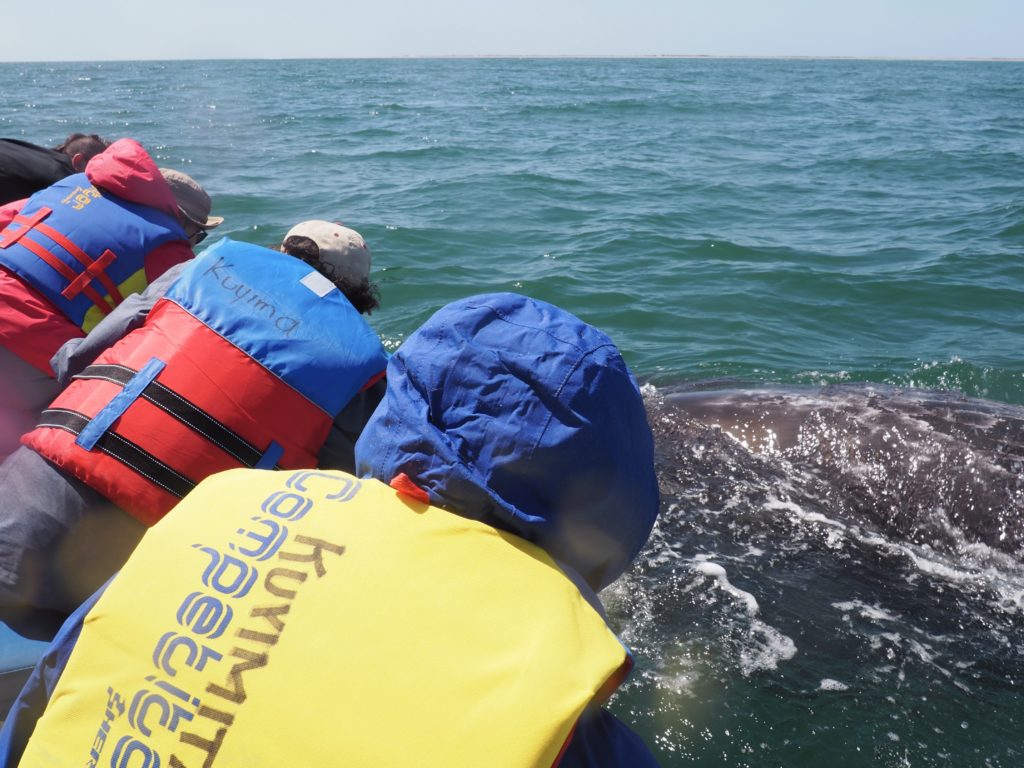

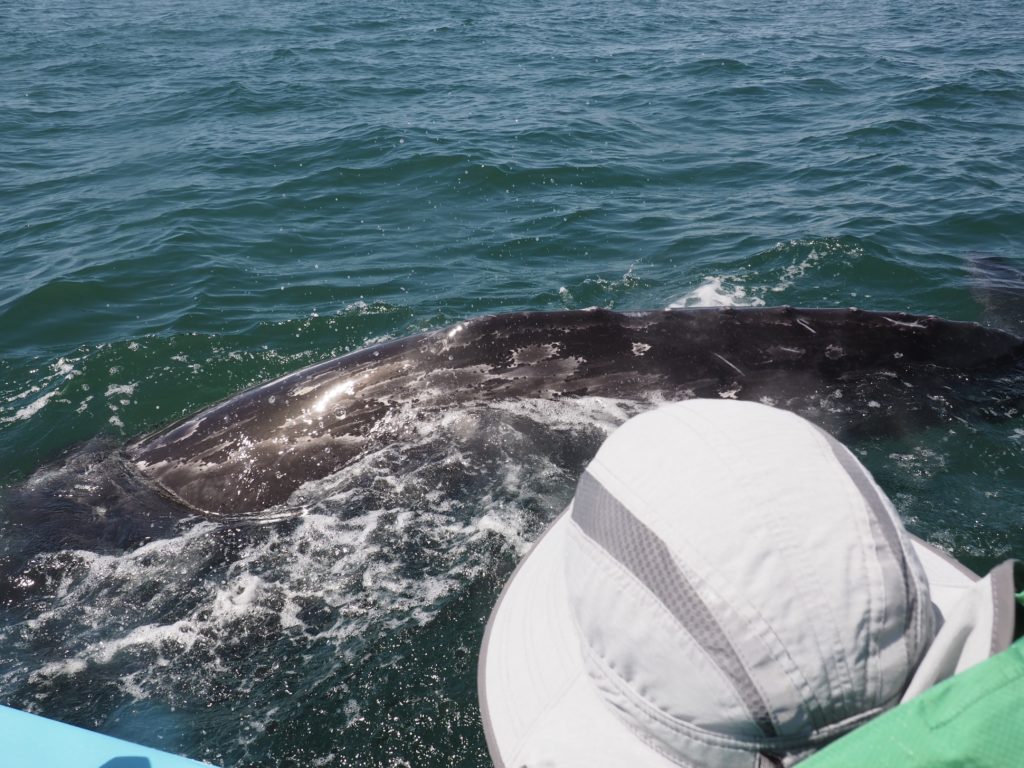
Amanda & Whale
Try as we might, we only got close to the whales and didn’t establish contact on our second day out. But, we did come home with some exceptional memories of some extraordinary fellow creatures.


